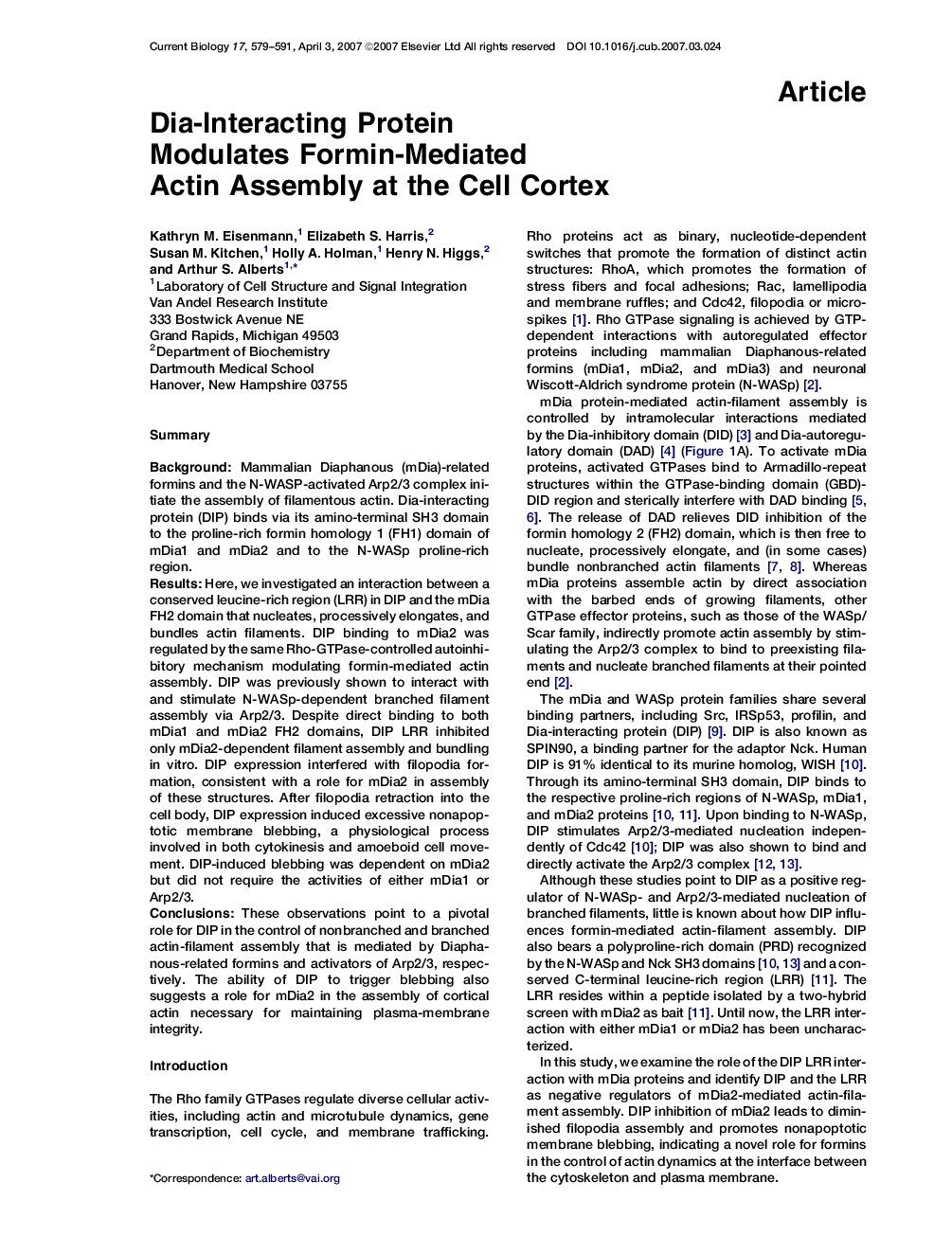| Article ID | Journal | Published Year | Pages | File Type |
|---|---|---|---|---|
| 2045293 | Current Biology | 2007 | 13 Pages |
SummaryBackgroundMammalian Diaphanous (mDia)-related formins and the N-WASP-activated Arp2/3 complex initiate the assembly of filamentous actin. Dia-interacting protein (DIP) binds via its amino-terminal SH3 domain to the proline-rich formin homology 1 (FH1) domain of mDia1 and mDia2 and to the N-WASp proline-rich region.ResultsHere, we investigated an interaction between a conserved leucine-rich region (LRR) in DIP and the mDia FH2 domain that nucleates, processively elongates, and bundles actin filaments. DIP binding to mDia2 was regulated by the same Rho-GTPase-controlled autoinhibitory mechanism modulating formin-mediated actin assembly. DIP was previously shown to interact with and stimulate N-WASp-dependent branched filament assembly via Arp2/3. Despite direct binding to both mDia1 and mDia2 FH2 domains, DIP LRR inhibited only mDia2-dependent filament assembly and bundling in vitro. DIP expression interfered with filopodia formation, consistent with a role for mDia2 in assembly of these structures. After filopodia retraction into the cell body, DIP expression induced excessive nonapoptotic membrane blebbing, a physiological process involved in both cytokinesis and amoeboid cell movement. DIP-induced blebbing was dependent on mDia2 but did not require the activities of either mDia1 or Arp2/3.ConclusionsThese observations point to a pivotal role for DIP in the control of nonbranched and branched actin-filament assembly that is mediated by Diaphanous-related formins and activators of Arp2/3, respectively. The ability of DIP to trigger blebbing also suggests a role for mDia2 in the assembly of cortical actin necessary for maintaining plasma-membrane integrity.
